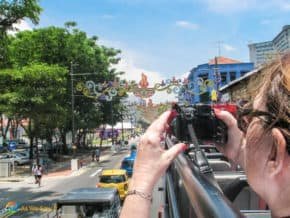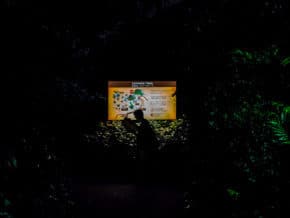The small island nation of Singapore is well-regarded for its status as a tropical Garden City. Touted as a modern phenomenon, the little red dot is considered as one of the greenest cities in the entire globe. At the core of this success is the Singapore Botanic Gardens UNESCO site, an award-winning tropical garden boasting a rich history older than Singapore itself.

In fact, it is widely considered to be the actual garden that earned Singapore its ‘Garden City’ moniker. Founded in 1859 by an agri-horticultural society and handed over to the government 15 years later, the Botanic Gardens in Singapore humbly began as a simple ornamental garden with roads and terraces before transforming over the years into the vast, wondrous park it is today. So rich is its cultural heritage that the 82-hectare Garden was awarded three stars by Michelin Travel in 2008 and was inscribed as Singapore's first UNESCO World Heritage Site on 4 July 2015.
Whether it is a family, a love-filled couple seeking solace or the wistful adventurer seeking a space for private reflection, the gardens are perfect for everyone. The beautifully maintained tropical wonder is separated into three different segments – the Tanglin Core, the Central Core and the Bukit Timah Core.
- Tanglin Core retains portions of the historic Gardens, acting as the heritage core of the entire Botanic Gardens.
- Central Core is suited mainly for tourists, with its attractions built specifically to cater to visitors both foreign and local coming to admire the Gardens.
- Bukit Timah Core serves as a zone dedicated to education and learning for schools and students.
Aside from the actual discovery of the vast array of flora displayed within every part of the Garden, each Core sports certain features and facilities that are aligned with its particular theme.
Tip: Singapore Parks has also announced the planned creation of the Learning Forest Core, designed to integrate into the Gardens’ existing rainforest to form an enlarged forest habitat. The Learning Forest will be progressively opened to the public in 2016.
Tanglin Core

The Main Gate, commonly referred to as Tanglin Gate, is the oldest part of the Gardens itself and was established in 1859. The public bus service will deliver you to a bus stop a walking distance from the gate and this is where you will first enter the Garden itself. The nearby Botany Centre which acts as the visitor information centre of the Botanical Gardens. Housed inside are the Library of Botany & Horticulture and the Orchid Breeding and Micropropagation Laboratory.
Tip: Make sure to check in with the staff regarding weather conditions and any physical maps you should bring with you.

The 240 sqm SBG Heritage Museum, located at Holttum Hall, features interactive exhibits that describe the history behind the Botanic Gardens. Amongst the exhibits, one can find old photographs, artifacts, plant specimens, rare botanical books and paintings as well as oral recordings.
The CDL Green Gallery is a 314 sq.m eco-friendly, zero-energy building that mainly displays botanical-or greening-related exhibits, which are regularly updated every six to nine months.
Both buildings are open every day, from 9am to 6pm, except for the last Monday of every month for the Heritage Museum and the last Tuesday of every month for the Green Gallery.

Lying far across from the SBG Heritage Museum is the serene Swan Lake. The lake was constructed in 1866, making it the oldest ornamental water-body in the country. Make sure to have snacks on hand; you and/or your family will delight in the chance to feed the fish and terrapins of the lake. As you do so, keep an eye out for the resident mute swans of the lake! The pair came from Amsterdam and are particularly known to thrill visitors with the sight of their milky white feathers and long slender necks.

A quaint Bandstand awaits those who explore the Sun and Bonsai Gardens. Its octagonal gazebo can serve as a quiet pit stop where you can shelter yourselves from the scorching sun. Take a moment to relax and admire the ring of yellow rain trees and the rolling greens that stretch into the distance.
The Sun Garden stick outs like a sore thumb against the rest of the Garden, mimicking the harsh landscape of dry deserts and displaying the plants that survive in such conditions. The Bonsai Garden displays up to 48 different tropical and sub-tropical species for your viewing pleasure. Greeting you as well is the hardy, free flowering orchid hybrid that is Singapore’s National Flower, the Papilionanthe Miss Joaquim (affectionately called Miss Joaquim for short).

Central Core
Heralding the Nassim Gate Visitor Centre is an 80-year old Rain Tree whose long and wide canopy encompasses much of the area surrounding the Centre’s entrance. A three-storey building, the Visitor Centre showcases incredible Southeast Asian architecture alongside modern amenities.
Here is an opportunity to rest after a long walk with a well-deserved meal at the Casa Verde, a restaurant serving both local and international dishes! Or, if you’re looking for an exquisite dining experience, take a short walk to the E J H Corner House. The black-and-white two-storey bungalow turned classy contemporary restaurant serves its special French-inspired menu, Gastro-Botanica.
If you have ever wondered what kind of plants existed during the time of the dinosaurs, do explore the 1.5-hectare Evolution Garden! Educate yourself with helpful displays that tell you more about the plants that formed a part of that ancient world lost so long ago.
Afterwards, head on to the Healing Garden, where you will find over 400 varieties of medicinal plants used traditionally in Southeast Asia; a perfect opportunity to learn about the various ways plants can help to naturally heal the human body.

Wedged in between the Tanglin and Central Cores is the Rain Forest, a six-hectare remnant of a primary tropical forest that once thrived in that area. The precious ecosystem is a natural heritage of Singapore, home to various species of plants, including rattans, fruit trees and even the towering Jelutong. Nearby, Palm Valley is lined by six different types of palms. At the end of the valley, roll out a picnic mat and take a seat by the waters of the Symphony Lake as you enjoy orchestral performances held at the Shaw Foundation Symphony Stage, a platform built into the centre of the lake.
National Orchid Garden

Although situated within the Central Core, the National Orchid Garden is a specially allocated area, three-hectares of carefully landscaped slopes displaying over 1000 orchid species and 2000 hybrids. One interesting feature about the Orchid Garden itself is the fact that it is wheelchair-friendly, thoughtfully designed with trail routes designed specifically for wheelchair-bound individuals.
Pick up an orchid guide at the Entrance Pavilion before beginning your journey. Then, follow the trail (an easy-to-understand trail guide with map is also available) as it takes you underneath the Golden Shower Arches. Cross a boardwalk while you gaze at lovingly tended orchids before arriving at the Golden Cage display and resting at the Tiger Orchid Fountain.

At the highest point in Singapore Botanic Gardens is Burkill Hall, a venue that offers a great view of the entire National Orchid Garden. A bit further along the trail is the VIP Orchid Garden, which retains a collection of orchids named after international VIPs who have graced Singapore Botanic Gardens with their presence. Tan Hoo Siang Mist House showcases rare and award-winning orchid cultivars from the entire Singapore Botanic Gardens.
Next is the only non-orchid display in the whole Orchid Garden, the Yuen-Peng McNeice Bromeliad Collection. The collection features around 200 bromeliads that originated from Shelldance Nursery in the United States. The last stop, the Cool House, was built to simulate a tropical mountain forest. Here, orchids of Asian, African and American origin grow on tree trunks, tree ferns and even rocks.

The trail finally ends where you started, back at the Entrance Pavilion. If you wish to bring back souvenirs after the exploration of the Orchid Garden, you may purchase them at the shop located inside the Entrance Pavilion.
National Orchid Garden tickets
To enter and experience a whole new world, the gated garden has a low admission fee of S$5.00 for adults, S$1 for students and senior citizens (aged 60 and above), and is free for children (aged 12 and below). Open from 8.30 am to 7.00 pm daily, but last ticket sales and entry is at 6.00 p.m. so keep that in mind!
Bukit Timah Core
The Bukit Timah Gate is a mere stone’s throw away from the Botanic Gardens MRT Station, making it the most convenient Gate for large groups of people to enter through. Inside the Bukit Timah Core, you will find the Eco-Garden. The ‘eco’ stands for economic and ecological; the plants within the garden are known for producing many valuable goods such as spices, fibres and fruits. The Eco-Garden itself is built around the Eco-Lake, where a family of black swans have made their home, and is the perfect spot for you to relax as the gentle wind breezes by.
The Foliage Garden, located close-by, showcases decorative terrestrial and aquatic plants of various leaf shapes, textures and colours.

If you have children with you, the Jacob Ballas Children’s Garden is the perfect place for them! This garden was developed with the theme “All Life On Earth Depends on Plants” in mind, and as such, is solely meant to provide children with uniquely interactive ways of learning about nature and her subtle intricacies. Let them work up a sweat at the Children’s Playground, where swaying suspension bridges, high Tree House slides and a labyrinthine maze awaits!
The Children’s Garden is closed on Mondays, open from 8:00 a.m. to 7:00 p.m. and is completely free of charge. Refreshments will be available at the entrance.


Tips for visiting
When you consider the dazzling array of attractions for both adults and children found within the Gardens, it’s certainly easy to believe that the Gardens itself is the most visited park in the whole of Singapore. A must-see location for both foreigners and locals alike!
- Be prepared for the heat. Make sure to wear light clothing, comfortable walking shoes and bring along drinking water to keep yourself hydrated!
- Volunteers conduct free tours of the Gardens every Saturday, except for the 5th Saturday of the month.
How to visit Singapore Botanic Gardens
There is no entrance fee to Singapore Botanic Gardens. It is open daily, from 5 a.m. (perfect for a morning jog) to midnight (plenty of time for a romantic evening on the lake with a significant other).
The gardens are easily accessible, situated in central Singapore, just 5 minutes away from Orchard Road. Not only is it on bus routes (as mentioned earlier), there is also a dedicated Botanic Gardens MRT Station. Taxi drop-off and pick-up points are also placed at the conveniently-placed Botany Centre, the Visitor Centre at Nassim Gate and the entrance at the Jacob Ballas Children’s Garden.


